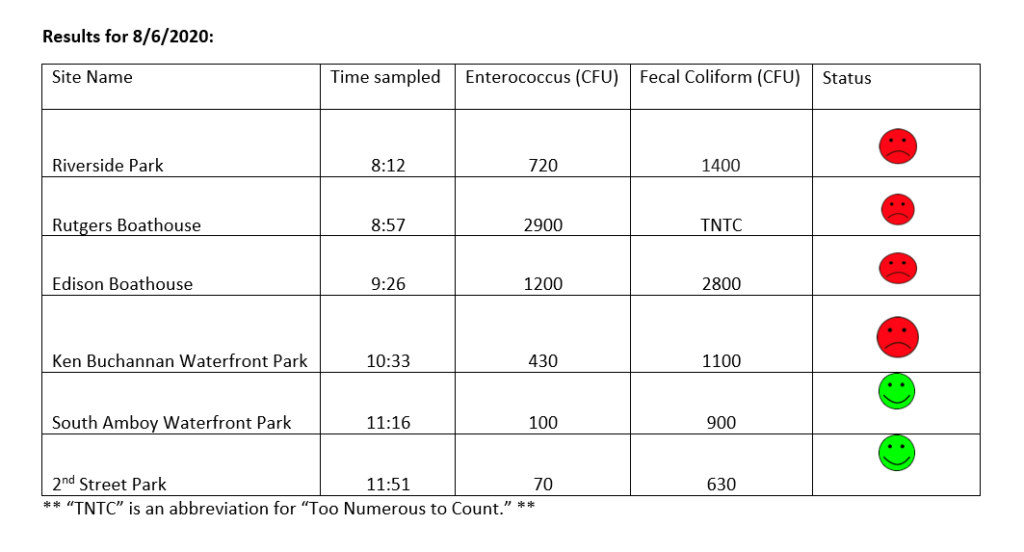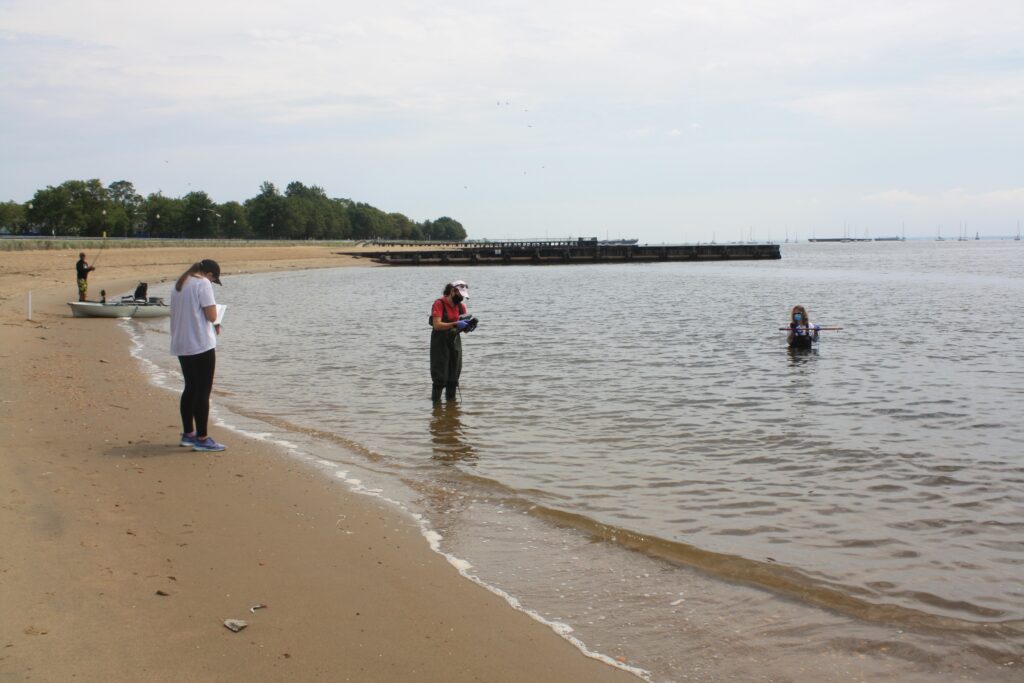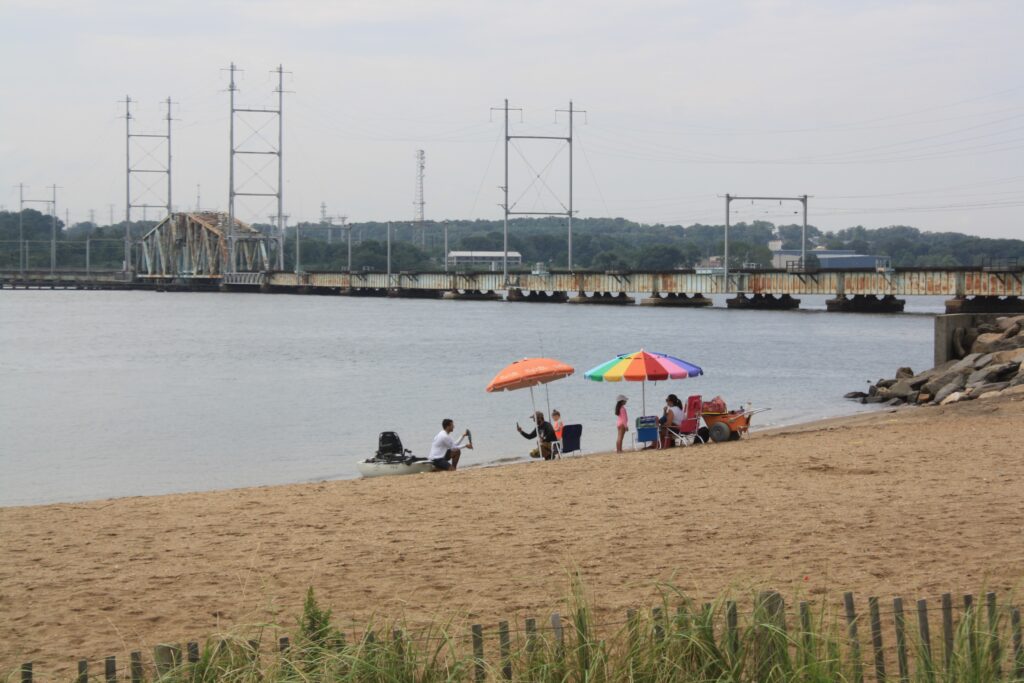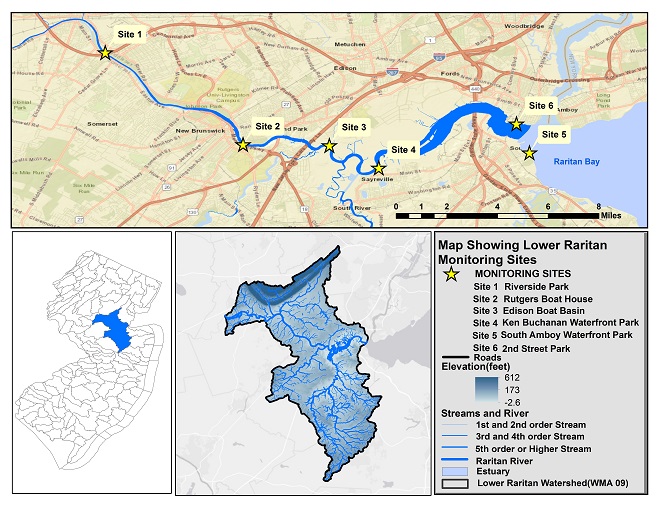Lower Raritan Pathogens Monitoring Results for August 7, 2020
The LRWP and EARTH Center of Middlesex County monitors for Fecal Coliform and Enterococcus at six non-swimming public beach access sites along the Lower Raritan during the warmer summer months. Fecal Coliform and Enterococcus are indicators of disease-causing bacteria in our waterways.
The EPA recommends that a single Enterococcus sample be less than 110 Colony Forming Units (CFU)/100mL for primary contact. Enterococci levels are used as indicators of the possible presence of disease-causing bacteria in recreational waters. Such pathogens may pose health risks to people fishing and swimming in a water body. Sources of bacteria include Combined Sewer Overflows (CSOs), improperly functioning wastewater treatment plants, stormwater runoff, leaking septic systems, animal carcasses, and runoff from manure storage areas. Enterococci levels are often high after heavy or consistent rainfall.
Please note that these results for August 6, 2020 are preliminary and awaiting Quality Control:

Field observations for 8.6.2020
Waters were running high and fast during monitoring, due in part to remnant stormwater flow from Tropical Storm Isiasis which started its destruction in New Jersey on August 4, knocking out power for 1.4 million state residents. Isiais pummeled the Lower Raritan as well, and the River looked like chocolate milk at our Piscataway, New Brunswick and Edison sites. We observed a fair amount of flotsam in the water, and a few islands of accumulating logs and trash.

(photo: Renee Skelton)

(photo: Renee Skelton)
Summer 2020 Lower Raritan Watershed Monitoring Sites

The New Jersey state Department of Environmental Protection and Middlesex County Health Departments typically monitor at sanctioned public swimming beach sites. They do not monitor the water quality for pathogens at public access non-swimming beach sites along the Raritan, despite regular use of these areas for primary contact (fishing and swimming) by members of our urban communities.
The LRWP works with in partnership with the Interstate Environmental Commission for lab analysis of our samples. We have a Quality Assurance Protocol Plan (QAPP) approved by the federal Environmental Protection Agency. We work to report our results as soon as lab analysis is completed.
